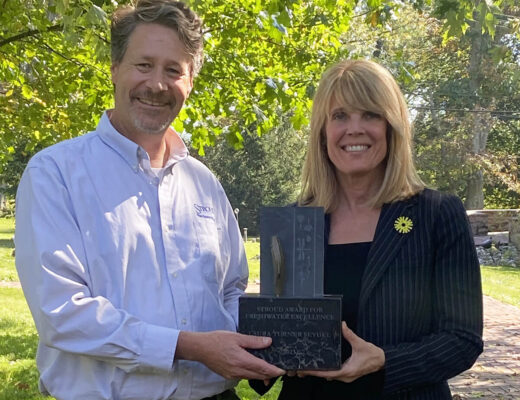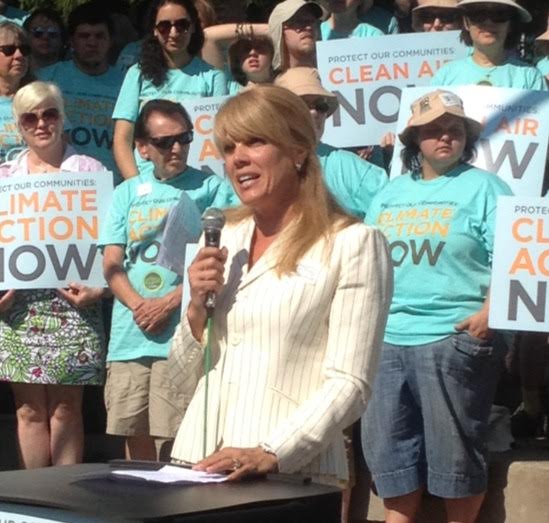I have been a member of the Rotary Club of Atlanta for several years. We have a guest speaker every week at our meetings. It is rare to have a standing ovation for a speaker, but that is exactly what happened when Katharine Wilkinson, Atlanta native and co-author of Drawdown (edited by Paul Hawken) recently spoke at our club about the New York Times bestseller and Project Drawdown, the related efforts that stem from the book. The term “drawdown” refers to the point in time when greenhouse gas concentrations peak in the atmosphere and begin to go down on a year-to-year basis.
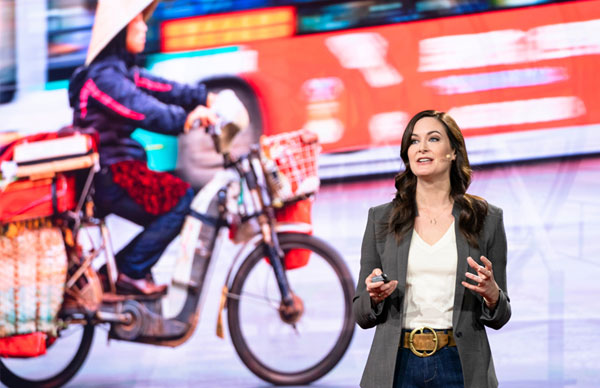
What’s so special about Drawdown is that this is the first time that we’ve had “an apples to apples comparison of technologies and practices that impact different greenhouse gases,” Wilkinson said. The results are backed by three years of research from 70 Drawdown research fellows from 22 countries and six continents. The peer-reviewed data and projected effectiveness of 100 solutions are already in existence, and the positive impact can be seen from various levels, ranging from local to global. Drawdown consists of eight sections of solutions and specific details regarding efforts toward implementation; it sheds light on the carbon impact of each solution for the next 30 years and the prospective monetary value or savings. The rankings are not, however, a means of choosing some solutions and leaving others, Wilkinson said, noting that we need all of the solutions at scale and to recognize how they are interrelated and support one another.
The following solutions jumped out at me because of the weight of their potential impact, the probable ease to administer them on local and global levels, and some of the interconnectedness between solutions that could produce an even greater effect.

#6 Educating Girls / #7 Family Planning
It may seem odd that providing greater means to educate girls would affect carbon emission; however, the impact would be major. As Wilkinson stated, “advancing gender equality has positive ripple effects on emissions and on shoring up resilience,” as approximately 130 million girls are of school age but not in school. Education of girls ultimately restrains population growth, because women with more years of education choose to have smaller families, which in turn reduces carbon emission. Family planning goes hand in hand with the education of girls, because many in lower-income countries who want to make informed decisions regarding contraception do not have the resources to do so.
#3 Reduced Food Waste / #4 Plant-Rich Diet
Approximately one-third of all food that is produced never makes it from a farm or a factory to a plate. Food rots and creates methane, which is 28 times more powerful than carbon. In the U.S., most food waste is by choice, Wilkinson said, as we “over-serve, over-order, over-buy and reject ugly produce.” Food-waste reduction is a two-fold solution, because it could also resolve hunger issues, which affect nearly 8 million people worldwide. Moreover, eating a plant-rich diet adds to this impact factor, because raising livestock for consumption and other purposes produces one-fifth of our global emissions. This powerful solution also addresses chronic health issues and health care costs, Wilkinson noted. And anyone can act on these immediately and at no cost.
#8 Solar Farms / #10 Rooftop Solar
Currently, 1.1 billion people who don’t have access to electricity use kerosene lamps, which are enormously polluting and immensely affect the air, Wilkinson said. Solar farms and adding solar energy panels to rooftops have helped to decrease the use of kerosene and provided broader access to electricity.
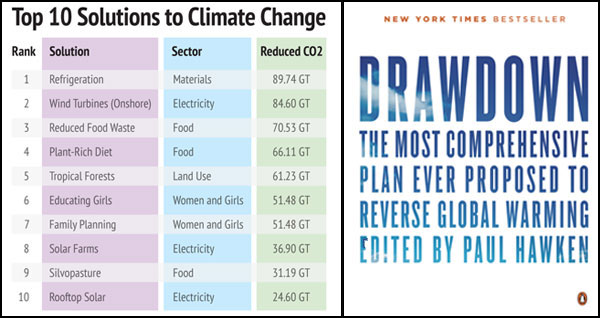
With the extensive and continued research of Project Drawdown comes exposure that elicits powerful attention and incentivized programs, such as Bloomberg’s American Cities Climate Challenge. This competition, which took place in the summer of 2018, sparked tremendous environmental activity. U.S. leaders were determined not to be discouraged by administrative decisions to back out of the Paris Climate Agreement. The city challenge selected 25 cities that showed the greatest inclination toward carbon-reduction goals. Through the program, cities are provided with technical and innovative support to combat cities’ highest emission-producing aspects: buildings and transportation. Similar efforts that cities and citizens can make is given in the recent National Geographic documentary “Paris to Pittsburgh,” where cities have become empowered to diminish past environmental wrongdoings to produce a greater future for their residents and ultimately worldwide.
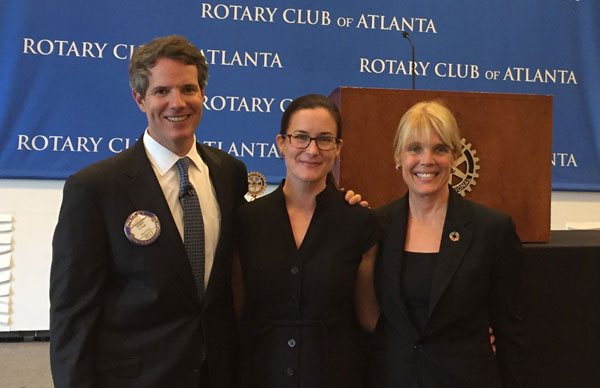
Before such projects existed, our collective effort seemed to consist of “change your lightbulbs and hope that the national government figures it out,” Wilkinson noted. In light of all of these resources to address climate change that we now have at our fingertips, there is nothing stopping us from moving forward at a rapid pace – nothing political, social or personal.
Listen to Katharine Wilkinson’s speech on the Rotary Club of Atlanta Podcast Series, episode 12, or watch her video on TEDWomen 2018.


